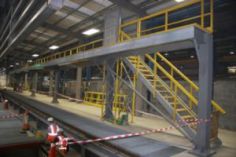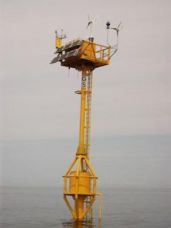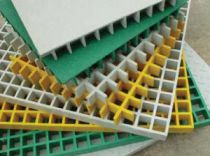
News 01787 377 322
Welcome to our news section. We are busy preparing news articles which we hope you will find interesting.
Fibreglass Structural Profiles as an Alternative for Steel
Composites are made of a minimum of two types of component materials, and enhance the properties of the constituent materials. Therefore, the combination of fibre and glass yields a product that is stronger and rigid. Fibreglass constitutes a major part of the composites utilised in industry. Since a composite is an amalgamation of materials, it can be made into an exact shape for a particular purpose. In fibreglass goods, the resin transmits the shear while the glass fibres endure the tensile and compressive weight.
The Role of Composite Materials in Shaping the Future
Composite materials have brought a revolution in designing of products. They are not only light, sturdy and supple, but can also be customised for a particular application. Wood and bones are their natural forms. In 1847, Swedish chemist Berzelius became the first to make artificial saturated polyester. Today, composite materials make up a sizeable part of manufactured goods, right from products used on a daily basis to complicated niche uses. The main consumer of composite materials is the transportation industry, construction, electrical and electronic equipment, marine, engineering, oil & gas consumer appliance and business equipment sectors are other users of composite materials. Today, composite materials are being used even though they can be costlier because they last longer, withstand chemical corrosion better, and are superior thermal and electrical insulators and are much lighter than traditional materials such as steel. They will be used more and more as scientists unearth their unknown properties.
Anti-slip Flooring Surfaces in the Workplace. Slips & Trips
The growing array of flooring surfaces that need to be polished to maintain their appearance has given rise to its fair share of slipping incidents. In a few extreme cases, such incidents have left victims paralysed or even fatally injured. In other cases, it has led to several law suits and expenses stemming from injuries like shoulder or elbow dislocation. Employees are also forced to go on medical sabbaticals to recuperate from such injuries, which may very well disrupt important work.
- You will save a lot on maintenance.
- You can avoid unpleasant litigations and law suits.
- It will allow you to move around faster rather than tread cautiously. In factories and workshops where workers need to move around quickly, it could very well mean increased productivity.
- You can have a uniform design across your entire building as these flooring solutions are suitable for foyers, factory floors, pathways, stairways, workshops, clubs and restaurants.
- You can add floor safety inspection reports to your corporate safety awareness drive.



